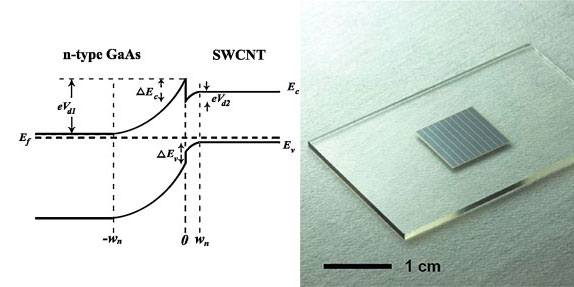In Al_ xGa_ (1-x) in the theoretical analysis of as GaAs solar cells, considering the good lattice matching between alas and GaAs, the interfacial recombination is often ignored in the calculation. We used the method in reference [3] to calculate the high Al component al_ xGa_ The short-circuit current of (1-x) as / SWCNT/GaAs cell also does not take into account the interface recombination. In order to estimate the influence of the heterojunction interface on the cell performance, we use the boundary condition with interface recombination to calculate the different boundaries.

Organic-inorganic hybrid solar cells, which combine the advantages of organic polymers and inorganic semiconductor materials, have good development prospects and have become the research hotspot of scientific researchers. The working principle of hybrid solar cells is mainly based on the heterojunction model, that is, excitons generated by light can be separated only after they migrate to the heterojunction interface of organic-inorganic materials, and the diffusion length of excitons is very limited (~ 10nm). Hybrid solar cells often have poor two-phase interface contact due to the small contact area of organic-inorganic materials and the differences in the properties of organic and inorganic materials. The exciton transmission to the heterojunction interface can not be effectively separated, resulting in the electron can not be smoothly transmitted from the organic polymer to the inorganic semiconductor and compound with the hole. Modifying the organic-inorganic heterojunction interface with suitable materials can effectively improve their contact performance, improve exciton separation efficiency, and then affect the photoelectric performance of the cell.

Compared with the unmodified hybrid film (SWCNT/GaAs/FTO / dye tio_2 / P3HT), the hybrid film with modified heterojunction interface (FTO / dye tio_2 / P3HT) has a greater degree of fluorescence quenching indicating that excitons can be effectively separated at the heterojunction interface before recombination and become free electrons and holes,It can be seen that selecting appropriate interface modification materials to regulate the two-phase interface properties and optimize the performance of hybrid solar cells has a very important role and significance.